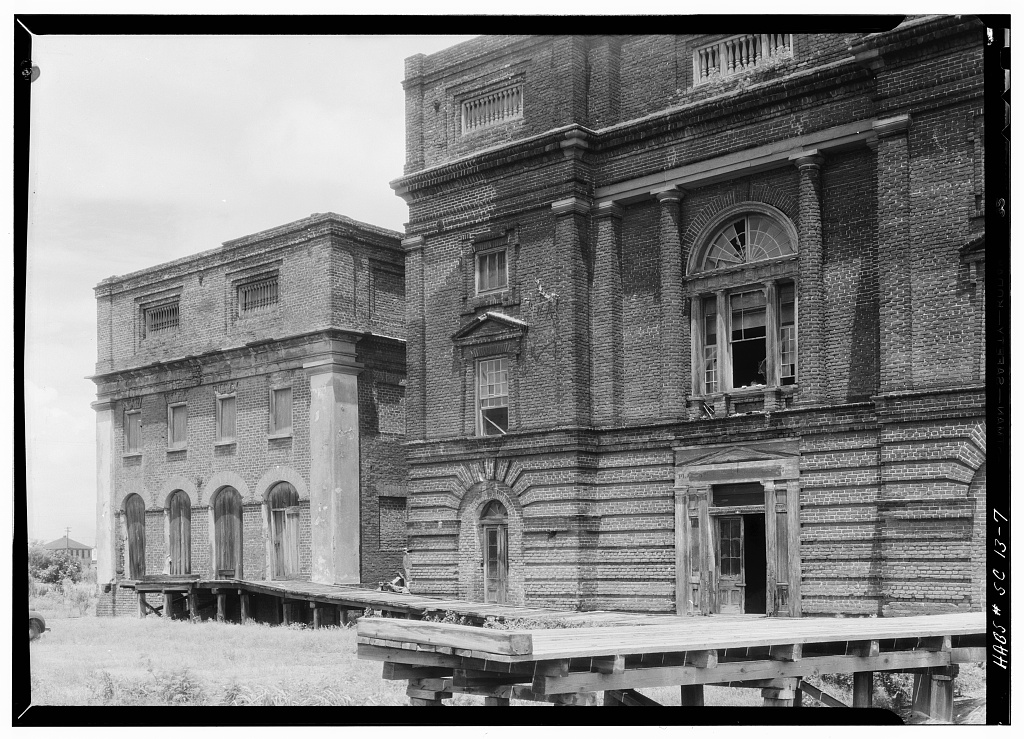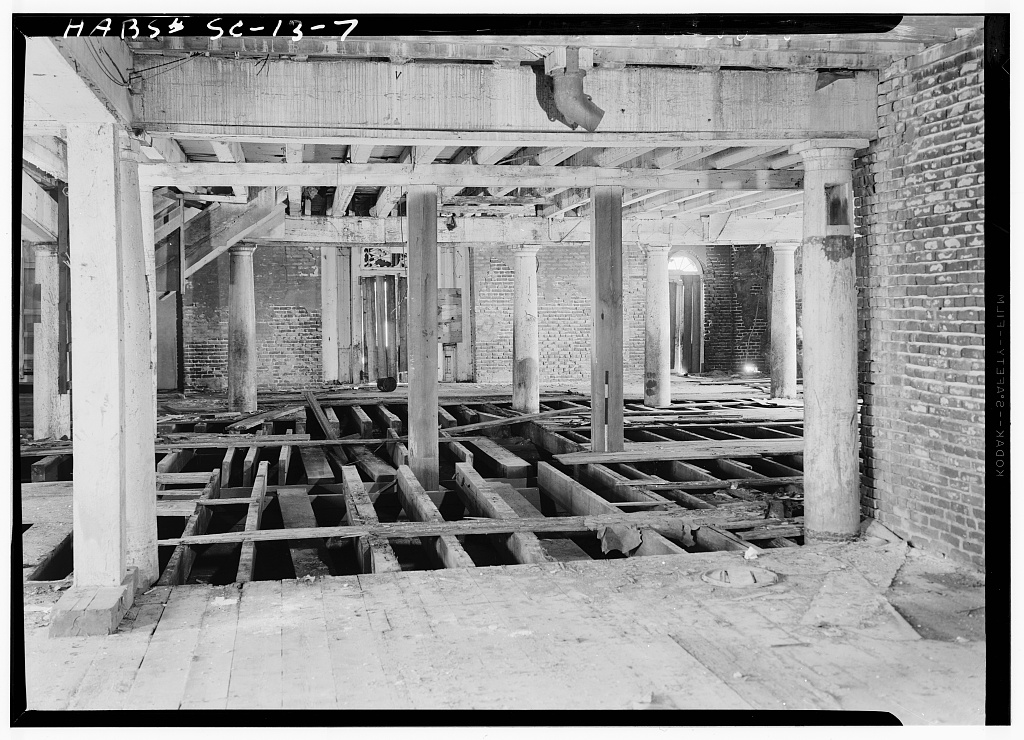BENNETT RICE MILL, c. 1844

Standing sentinel along the Cooper River side of Charleston’s peninsula, the Bennett Rice Mill once epitomized the wealth, strength and power of the antebellum rice planters. The cultivation and export of rice had made the Carolina Lowcountry one of the wealthiest regions in America throughout the 18th and into the 19th centuries, with more than 60 million pounds harvested annually and sold around the world in 1840.
Banker, former S.C. Governor and owner of three thriving plantations, Thomas Bennett built the imposing industrial structure in 1844 and is believed to be its architect. Integrating Classical Revival and Italian Renaissance styles, featuring Palladian windows and brick columns with stone caps and lintels, the mill was considered one of America’s finest examples of 19th century industrial architecture.
Operations began in 1845, employing the latest steam-powered technologies to separate rice grains from their husks. Originally 90’ by 60’, Bennett’s was only the third largest rice mill in Charleston in terms of its physical size. Yet given its waterfront location and the efficiencies of its modern steam technologies, Bennett’s produced some 200 bushels a day by 1850, making it the third most productive rice mill in America.
Though it continued to operate throughout the Civil War, the rice industry, and thus its mills, was greatly diminished afterward. Bennett’s Mill processed rice on a much smaller scale until 1911, when a major hurricane flooded out the last remaining rice fields. The building passed out of the Bennett family’s ownership and served brief stints after 1920 as a peanut plant and warehouse.
Things never got better. A 1938 tornado ripped off the mill’s roof and did other damage to the structure. Neglect and exposure continued to compromise its bricks and mortar, sections began to crumble, and the building was condemned as unsafe in 1952. The city began to demolish parts of it shortly afterward.
In 1958, the S.C. Ports Authority purchased the property and worked with local preservationists to stabilize the mill. But it was not to be. A tornado spawned by Hurricane Donna as it passed by the Charleston coast on Sept. 11, 1960, brought down three walls completely and left the west façade dangerously unstable. At preservationists’ urging, SCPA braced the remaining wall with a steel frame which held up pretty well, though not perfectly, through Hurricane Hugo in 1989. A limited effort to stabilize the façade was again made. Today, the future of the west wall remains uncertain as the ports authority, cruise ship industry, city officials, and preservationists contentiously debate the ongoing redevelopment of the Cooper River waterfront.



